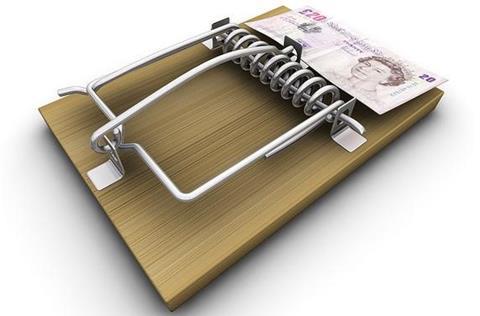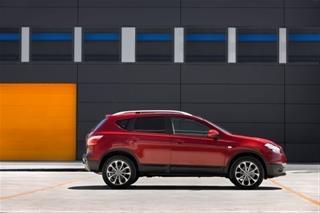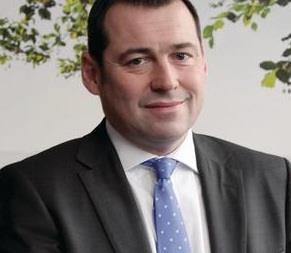Private equity firms’ appetite for buying insurance companies appears to be undiminished. Yet there are signs that, in the present difficult economic climate, such business arrangements can come unstuck

On the surface, private equity looks to be in rude health when it comes to insurance investments.
Last year, CVC Capital Partners and Apollo teamed up to buy Brit for £888m. And, only this month, Charterhouse Capital Partners emerged as a front runner to buy Groupama’s UK arm through two of its investments, Acromas and Giles.
But the headlines can be deceptive. As this Insurance Times investigation reveals, using Charterhouse as an example, the private equity investment model is creaking under pressure from the UK’s sluggish economy and the battered confidence of markets after the financial crisis.
The traditional private equity model of buying cash-generative businesses and loading them with debt can work well in good times, as a lucrative sale pays off the debt and returns rich rewards for investors.
But as Charterhouse-owned credit hire firm Drive Assist found in 2011, the model can come unstuck in more challenging business climates.
Drive Assist hits a bump
Charterhouse bought a 78% stake in Drive Assist for £250m in 2007, before the onset of the financial crisis.
Since then, credit hire firms have struggled. The tougher economic climate means fewer driving hours, resulting in a smaller number of claims and thus lower demand for their services. This, in turn, is leading to cut-throat competition.
Drive Assist lost two major contracts in the first half of 2011, slashing turnover and leaving it to struggle with a £43m interest bill from £380m of net debt.
‘IPO is looking difficult for highly leveraged intermediaries’
Bill Cooper, Lloyds Bank
Drive Assist finance director Chris Wright says: “Our vehicle finance needed renegotiating and, in addition, we lost two contracts, so we were half the size that we were previously. The ongoing business couldn’t continue trading with the level of debt it had.”
So in July last year the company had to overhaul its financial structure. As part of this the company received £26.5m in new investment, some from Charterhouse - although Wright declined to say how much - and converted £294m of its debt to equity.
Instead of receiving interest payments, creditors will now get their payment as shareholders once the business is sold. The overhaul meant £37.6m of the interest was waived.
The restructuring also diluted Charterhouse’s stake in the firm to 54%, despite its cash injection.
Wright says: “To accommodate all the various parties writing off debt, someone had to give up some shares and it was felt management should retain their shareholding of about 20% to incentivise them to continue taking the business forward.
“Despite putting in new capital themselves, Charterhouse accepted a reduction in its shareholding for the good of the business.”
While the challenges in the credit hire market continue, the burden of interest payments has been alleviated. “The company is on a much stronger financial footing and continues to trade profitably,” Wright says.
High debt dilemmas
Given the Drive Assist experience, questions must be asked about the challenges facing Charterhouse’s other two investments, Giles and Acromas. Charterhouse holds a 64% stake in Giles and a 35.8% share in Acromas, created to acquire Saga and AA in 2007. Both have significant broking operations.
The problem is that high debt levels in relation to earnings leaves little wiggle room if things go wrong and makes flotation more difficult.

Acromas and Giles have shareholder deficit positions, meaning their main financing method is debt. They are making losses on a statutory basis (factoring in interest, depreciation and amortisation) and both have large annual interest bills (see right).
The sluggish economy is also piling pressure on Giles and Acromas as UK rates remain broadly soft and less insurance is being bought. The best way out of this predicament is growth by acquisition, also problematic.
Finance is less plentiful
Sources suggest the FSA is keeping a watchful eye on heavily indebted brokers and is wary of allowing more acquisitions that could boost debt levels further.
Refinancing the debt could be hard. While debt is cheaper to raise today than when Charterhouse took its initial stakes in Drive Assist, Acromas and Giles, it is less plentiful.
The problem is that high debt levels compared to earnings could hinder the classic exit for private equity: an initial public offering (IPO) on the stock market. When this goes well, the proceeds are used to pay down the debt, and cash that would have been used to pay interest goes into shareholder dividends.
But stock market investors are currently wary of companies floating to exit private equity ownership, fearing that they may still have high debts if the IPO proceeds do not cover the amount on the company’s books.
Moreover, with stock markets volatile, many planning flotations, notably Hastings and Cooper Gay, are putting their plans on ice.
While declining to comment on Acromas and Giles specifically, Lloyds Bank insurance head Bill Cooper says: “Highly leveraged insurance intermediary businesses with heavy repayment demands at some point over the next two or three years are going to face some challenges. It will not be straightforward to refinance those transactions and the IPO is looking difficult for businesses like that.”
But Towergate, for example, has shown it is possible to have fresh debt financing by issuing high-yield bonds. Another option would be to find a merger partner with less debt.
Number crunch
Acromas and Giles may face tough markets, but they have yet to experience the transformational loss of business that prompted drastic measures at Drive Assist. The companies themselves also argue that their debt burdens are manageable.
Giles, for example, only looks at its bank debt when calculating its interest coverage ratio, omitting the £17m loan note interest representing Charterhouse’s investment.
Its argument is that the loan notes are effectively equity, and the interest, while recorded as a charge in the profit and loss account, is not payable in cash to Charterhouse in the way that interest on bank loans would be.
The situation at Acromas is similar. The company had an interest bill of £696.5m, exceeding its adjusted earnings before interest, tax, depreciation and amortisation of £570.1m. Yet it only paid £313.7m of this in cash.
The company says that the interest on its ‘shareholder debt’ – that injected by its private equity backers – “is not required to be settled in cash but is rolled up onto the capital amount”.
Acromas spokesman Paul Green says: “We have got no concerns about servicing our debt and we’ve a substantial amount of cash in the bank.”
However, Drive Assist operated a similar capital model to its peers and, as its experience shows, a sudden drop in revenue can change everything.

Industry view: Charterhouse
Transactions: 135
Total transaction value: over £41bn
Target size: between £330m and £3.3bn
Charterhouse is a well-known, well-regarded but secretive private equity company. It has a policy of not talking to the press.
Some contend Charterhouse mis-timed its foray into the insurance industry, buying at the top of the private equity buy-out boom.
However, those familiar with the company suggest that it did not consider timing when it bought its stakes. Rather, it saw an opportunity to buy into good businesses and took it.
While the finances of Charterhouse’s insurance investments look unfavourable, some contend they are strong players in their respective fields.
Unlike some firms, it is also not necessarily in a hurry to exit its investments. While one of its investment criteria is “companies of a size which allows them to seek flotation within five years”, one observer says Charterhouse has a reputation for holding on to assets over a longer time frame where it is deemed to be necessary.





































No comments yet